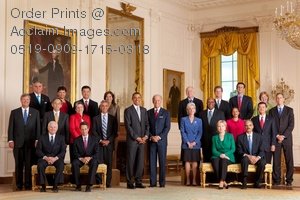President |
Vice President |
Cabinet Members |
He has National Security Powers:
- Serves as Commander in Chief of the armed forces.
- He can authorize the use of troops overseas without declaring war.
- Makes treaties with other nations.
- Nominate ambassadors.
- Receives ambassadors of other nations.
|
The Vice President helps the President |
They helps the President |
Legislative Powers:
- Presents info on the state of the Union.
- Recommends information to Congress. He proposes bills only.
- Convenes both houses of Congress in special sessions.
- Approves laws passed by Congress.
|
Advises the President |
Advisors to Presidents |
Administrative Powers:
- Appoints the heads of each Executive Branch department.
- He appoints Supreme Court Justices, ambassadors, and other officials with the agreement of the majority of the Senate.
- Request written opinions of administrative officials.
- Fills administrative vacancies during congressional recesses.
|
President of the Senate |
Heads of Fifteen executive departments:
Secretary of
- Agriculture
- Commerce
- Defense
- Education
- Energy
- Health and Human Services
- Homeland Security
- Housing and Urban Development
- Interior
- Labor
- State
- Transportation
- Treasury
- Veterans Affairs
- Attorney General
|
Judicial Powers:
- Grants reprieves and pardons for Federal crimes (except impeachment).
- Appoints Federal judges, with the agree of the majority of the Senate.
|
He or she becomes President if the President is unable to serve. |
Cabinet - level rank has also been given to the
- Administrator of the Environmental Protection Agency
- Director of the Office of Management and Budget
- Director of the National Drug Control Policy
- Assistant to the President for Homeland Security
- U.S. Trade Representative
|
| The President can veto or reject laws. |
|
They are appointed by the President and confirmed by the Senate. A fifty-one vote in the Senateis needed to confirm them. |
| The President signs and approve laws. |
|
They can not be members of Congress or hold an elected office. |
| President enforces the laws of the land. |
|
They are appointed only for the duration of the administration, but may be dismissed by the President at any time. |


![]()
![]()